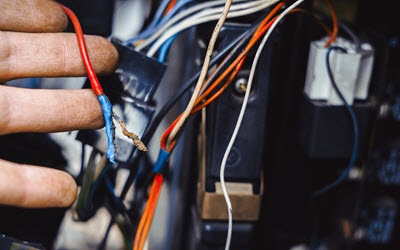
Range Rovers are made to perform well and provide comfort to the passengers but like any other car, they are not immune to mechanical failures such as a failed suspension strut. These components are very essential in ensuring that the car runs well and has the right balance.
By gaining knowledge on what leads to these failures, you will be able to maintain your Range Rover in excellent condition. Below are some of the causes of failed suspension struts in Range Rovers and how to prevent them.
Common Causes of Suspension Strut Failure
- Wear and Tear: One of the reasons why suspension struts stop doing what it was designed for is regular wear and tear. The struts are constantly under motion and stress and they tend to wear out as time goes on. This is even more so for cars like Range Rovers because they are frequently used in rocky areas and other offroad terrains. These conditions make the struts work harder and wear out faster.
- Overloading: Range Rovers are designed for towing and carrying loads that are very bulky and heavy. Although they are built to withstand this, overloading the vehicle beyond its rated carrying capacity can cause additional stress on the suspension struts. If you frequently drive your Range Rover with excessive load, it puts a lot of pressure on these components, and this will result in their early failure. It is always important to check the load carrying capacities of your vehicle and ensure not to overload it to safeguard your suspension.
- Poor Road Conditions: Frequent driving on bad roads including; potholes, gravel, and rough terrains may cause a lot of damage to the Range Rover’s suspension struts. These rigorous conditions are capable of shortening the struts’ life cycle. Staying off bad roads as much as possible and driving safely when on bad roads is a good way of prolonging the lifespan of your suspension struts.
- Corrosion: One of the major factors that can cause damage to the suspension system of a Range Rover is corrosion and this is usually prevalent in regions where people use salt on the roads during winter. The presence of this salt can hasten the rusting process and cause metal parts of the struts to corrode. This in turn weakens the struts and may lead to their failure. To avoid the accumulation of salt and subsequent formation of rust, it is advisable for Range Rover owners to frequently wash their vehicles, especially the undercarriage.
- Leaks in Hydraulic Fluid: Hydraulic fluid is used to absorb shock and provide a comfortable ride in many Range Rovers through the suspension struts. However, with time, the seals may deteriorate and allow the hydraulic fluid to leak. If the fluid leaks, the struts will not be able to perform the shock absorber function effectively, increasing the ride roughness and wearing other suspension parts. It is necessary to conduct inspections to prevent potential leaks and address them before they result in severe issues.
Preventing Suspension Failure
- Regular Inspections: It is recommended that your suspension system be checked by a professional mechanic at least once in a while. Periodic inspections are helpful in knowing the degree of wear and tear so that the necessary repairs can be made on time. When you detect such problems at their initial stages you will be able to avoid the worsening of the problems and in addition, it will help in avoiding having to spend a lot of money on repairs.
- Drive Carefully: Do not drive your car over potholes, speed bumps, and any rough surface if you have any chance of avoiding it. Slow driving minimizes the stress on your Range Rover suspension system. If you are cautious with the road conditions and avoid some of the potholes, you will be saving your suspension struts and getting a smoother ride at the same time.
Bring Your Range Rover To Our Garage For Quality Repairs
Carotech Automotive is the best auto repair shop for your European and Japanese vehicles in Los Angeles, CA. All our certified technicians are well equipped to deal with any problems your car may have. If you suspect a failed suspension strut in your Range Rover, do not hesitate to come to our mechanics.
Our experts are aware of how critical a comfortable and safe ride is to you and this is why they will use their knowledge and ability to identify and repair suspension problems as soon as possible. You can contact us at the number (424) 283-4303 to talk to our certified technicians.


 and repairing European cars, especially the Mini brand. Our garage, located in Los Angeles, CA, has state-of-the-art facilities designed to give Mini drivers quality services. If you are looking to find a qualified mechanic to replace your Mini’s PCV valve, then there is no need to search any further.
and repairing European cars, especially the Mini brand. Our garage, located in Los Angeles, CA, has state-of-the-art facilities designed to give Mini drivers quality services. If you are looking to find a qualified mechanic to replace your Mini’s PCV valve, then there is no need to search any further.
 for all your European and Japanese auto repair in Los Angeles, CA, and nearby areas. If you are the owner of a luxury car, such as a Porsche, then it is very important to take care of and maintain it so that it can deliver the performance it is designed for. As much as owning a Porsche is a dream come true, it is not always a rosy affair because the car can develop some problems such as a faulty IMS bearing. If this happens, you can bring your car to our ASE-certified mechanics for the necessary repair services. Rest assured we will get your Porsche back to its best performance. Call us now to book an appointment at (424) 283-4303.
for all your European and Japanese auto repair in Los Angeles, CA, and nearby areas. If you are the owner of a luxury car, such as a Porsche, then it is very important to take care of and maintain it so that it can deliver the performance it is designed for. As much as owning a Porsche is a dream come true, it is not always a rosy affair because the car can develop some problems such as a faulty IMS bearing. If this happens, you can bring your car to our ASE-certified mechanics for the necessary repair services. Rest assured we will get your Porsche back to its best performance. Call us now to book an appointment at (424) 283-4303.
 of handling and maneuverability issues in a vehicle. So, if you are noticing any of the above said signs and suspecting a glitch in your Volvo’s tie rods, please reach out to us at our facility in Los Angeles, CA. Technicians working at
of handling and maneuverability issues in a vehicle. So, if you are noticing any of the above said signs and suspecting a glitch in your Volvo’s tie rods, please reach out to us at our facility in Los Angeles, CA. Technicians working at 
 the
the 
 just mechanics; we’re your car’s best buddies, ready to jump into action whenever those wheel bearing troubles start to cramp your style. No matter the adventure your Mini has been through, our team has the skills, the tools, and the passion to
just mechanics; we’re your car’s best buddies, ready to jump into action whenever those wheel bearing troubles start to cramp your style. No matter the adventure your Mini has been through, our team has the skills, the tools, and the passion to 
 are the leading auto repair shop for all Audi repairs. If you notice any inconsistency in your Audi’s digital dashboard, you can trust us to handle it. Our team comprises highly trained technicians equipped with the expertise to diagnose and proficiently resolve any dashboard issues your Audi might face.
are the leading auto repair shop for all Audi repairs. If you notice any inconsistency in your Audi’s digital dashboard, you can trust us to handle it. Our team comprises highly trained technicians equipped with the expertise to diagnose and proficiently resolve any dashboard issues your Audi might face.
 choice for exceptional repairs and maintenance, specifically for Mercedes owners. When you entrust your vehicle to our garage, our team of trusted mechanics will meticulously diagnose the root cause behind your car’s reluctance to start. With precision and expertise, we’ll swiftly and accurately resolve the issue, ensuring your Mercedes gets back on the road with confidence.
choice for exceptional repairs and maintenance, specifically for Mercedes owners. When you entrust your vehicle to our garage, our team of trusted mechanics will meticulously diagnose the root cause behind your car’s reluctance to start. With precision and expertise, we’ll swiftly and accurately resolve the issue, ensuring your Mercedes gets back on the road with confidence.
 our commitment to excellence. Our team of skilled technicians understands the nuances of Porsche engineering, and we approach clutch slave cylinder replacement with the precision it demands. We believe in transparency and ensure that our clients are informed at every step of the process. Located in the heart of Los Angeles, CA, we serve as a haven for Porsche enthusiasts who demand the best for their vehicles. Our state-of-the-art facility, paired with a passion for automotive excellence, makes us the ideal choice for your Porsche’s service and repair needs.
our commitment to excellence. Our team of skilled technicians understands the nuances of Porsche engineering, and we approach clutch slave cylinder replacement with the precision it demands. We believe in transparency and ensure that our clients are informed at every step of the process. Located in the heart of Los Angeles, CA, we serve as a haven for Porsche enthusiasts who demand the best for their vehicles. Our state-of-the-art facility, paired with a passion for automotive excellence, makes us the ideal choice for your Porsche’s service and repair needs.
 performance, expertise reigns supreme.
performance, expertise reigns supreme. 



Recent Comments